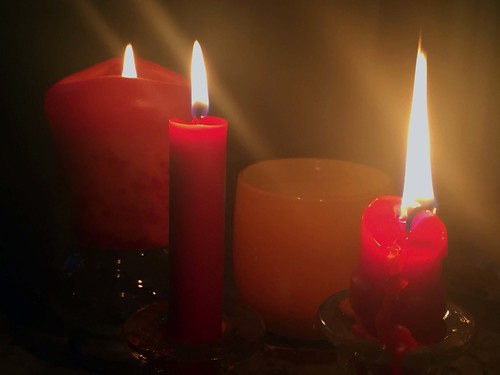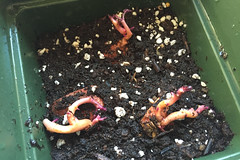Daphne brought up biochar as the most stable way to sequester unwanted atmospheric carbon. As a nice side effect, it also improves the soil. And Tony explained that my tasty lettuce gardens don't hold onto much carbon very long, but if I added more wetlands, that would. Hmm, carbon gardening - that's new to me. I had to do more research.
The main focus of recent Climate Change Conferences is to reduce emissions, but then, there's a secondary discussion: what to do with the carbon that's already in the air? Biochar is one proposal.
Solutions for the "What to do with it" problem have been divided into biological and chemical approaches. NOFA recommends tying CO2 up in plant/compost cycles. This has the advantage of using a free energy source: the sun. The disadvantage is that we have only the earth's surface for this activity.
Biochar (pyrolyzed organic products that sequester CO2) production is also considered a "biological approach". (I'm not sure why as it doesn't use the sun to do the pyrolyzing, it uses fossil fuel. It just make use of organic products.) Biochar has the advantage of great potential capacity as it can be buried, However, the scale it's used on currently is relatively minuscule.
There are also spectacularly varied chemical methods of capturing CO2 that are being proposed — "from direct air capture using resins, to the use of crushed olivine (a mineral that absorbs CO2 as it weathers) to seed beaches, to new forms of carbon-negative cement-making."
But back to the biochar, it's currently having an impact agriculturally as a soil amendment that revitalizes tired soils. It's not effective everywhere (negative issues include price, affects on soil microbes, and the large volumes that are needed), but in many places it is improving crop production. Like Daphne's garden! (Is that how she grew those beautiful sweet potatoes?)
As far as expanding biochar production to the point where it can impact atmospheric CO2, critics are concerned that land used to grow plant material could displace food crops, they sorry and about socioeconomic effects, and they worry about what eventually happens to biochar in soils - when it does breakdown. They worry that sufficient research has not yet been done.
I like the rational view of Stephen Joseph, a biochar researcher from Univ of New South Wales in Australia, "Biochar probably won’t save the world from climate change, nor is it going to be the key to increasing agricultural productivity everywhere. But used wisely, it is a tool that may help in both situations.”
Personally, I this I'll to stick with NOFA's very biological approach and traditional methods: Cover everything I can with plants (more lettuce!! more clover!!), compost everything I can on site, and use my chickens to enhance my composting. I'm also growing locally - in my backyard - and reduce driving to the grocery store. I hope my little micro-farm is at least a transient a part of reducing atmospheric CO2.
Sources:
NY Times (July 24, 2015) A Third Way To Fight Climate Change
BloombergBusiness (June 8, 2015)
Scientists Are Coming Up With 'Last Ditch' Remedies for Climate Change
PBS (July 3, 2015) The Coal That’s Good for the Climate



















